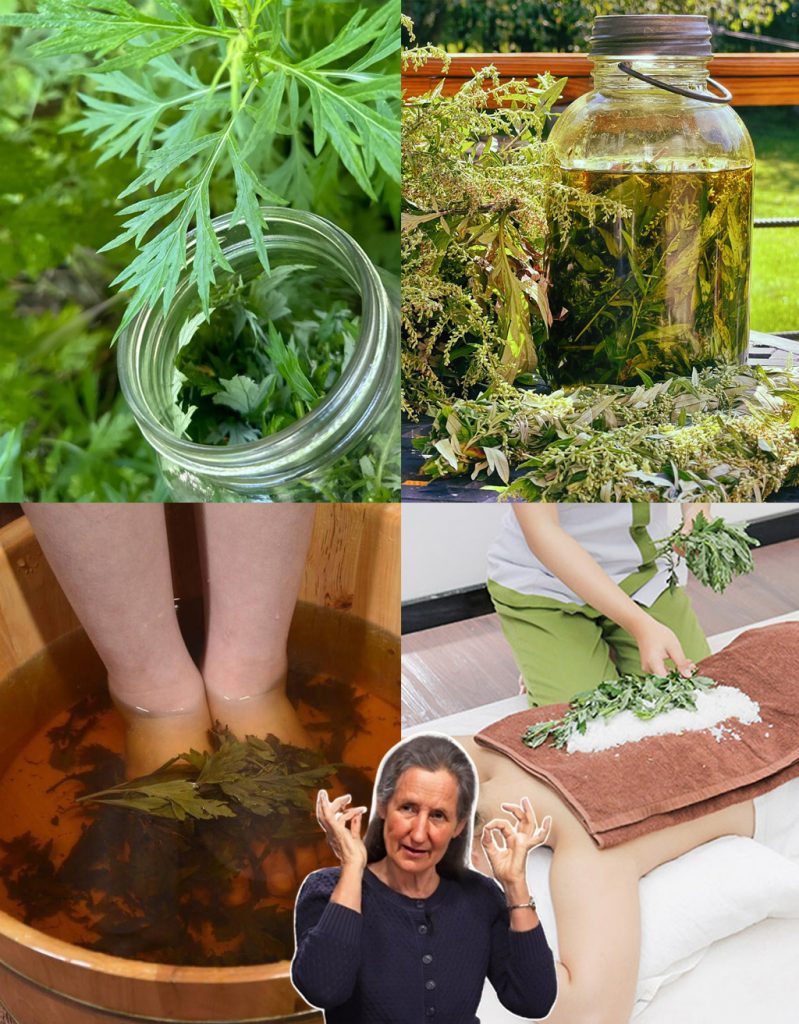Mugwort (Artemisia vulgaris) is a perennial herb with a rich history, earning the nickname “mother of herbs” in the Middle Ages for its wide range of traditional applications, particularly concerning female health and digestion.1 While scientific research is still limited and inconclusive for many claims, its traditional and modern uses are extensive.2

I. Key Health Benefits and Properties (Traditional & Emerging Research)

| Benefit Area | Traditional/Reported Use | Scientific Properties Identified (Pre-clinical) |
| 1. Female Reproductive Health | Used to regulate and stimulate menstrual cycles (emmenagogue), ease menstrual cramps (dysmenorrhea), and was historically used to turn breech babies via moxibustion. | Contains compounds (like artemisinin) believed to be gentle uterine stimulants and has been studied for its estrogenic activity. |
| 2. Digestive Support | Used as a bitter tonic to stimulate appetite, increase gastric juices and bile production, and relieve common issues like gas, bloating, colic, and slow digestion. | Antispasmodic (muscle relaxing) effects that can soothe the digestive tract and a bitter taste that promotes bile flow. |
| 3. Anti-Inflammatory & Pain Relief | Applied topically to relieve joint pain (arthritis) and muscle aches; used internally for headaches. | Demonstrated anti-inflammatory and analgesic (pain-relieving) properties, particularly when used in moxibustion therapy. |
| 4. Antimicrobial Activity | Used to treat intestinal worms (anthelmintic), skin sores, and fight fungal infections like ringworm and Candida. | Shown antibacterial (against E. coli, S. aureus) and antifungal effects in laboratory studies. |
| 5. Antioxidant Effects | Supports overall vitality and protects against general ailments. | Extracts contain flavonoids and polyphenols that exhibit strong antioxidant and free radical scavenging capabilities. |
| 6. Sedative / Nervous System | Used as a folk remedy for restlessness, anxiety, insomnia, and for promoting lucid or vivid dreams (often by placing dried leaves under a pillow). | Reported to have anxiolytic (anti-anxiety) and sedative effects, though this remains largely anecdotal. |
| 7. Liver Protection | Traditionally used as a general tonic to cleanse the body. | Preliminary studies suggest hepatoprotective effects, supporting liver function and detoxification pathways. |
II. Traditional and Modern Uses

- Moxibustion (TCM): The most common application. Dried mugwort (“moxa”) is rolled into cones or sticks and burned over acupuncture points to warm the meridians, stimulate blood flow, and treat conditions like knee osteoarthritis and attempting to correct breech fetal position.3
- Culinary Spice: Used in Europe to flavor rich or fatty meats (like roast goose) and in East Asia (China, Korea, Japan) in rice dishes, soups, and dumplings, thanks to its aromatic, slightly bitter compounds which aid digestion.4
- Herbal Tea: Brewed as a soothing tea to relax nerves and stimulate appetite and digestion.5
- Topical: Essential oil is used in lotions or creams for its anti-inflammatory properties, sometimes to relieve itching associated with hypertrophic scars.6
III. Safety and Precautions
- Pregnancy: Mugwort must be avoided during pregnancy as it may stimulate uterine contractions and increase the risk of miscarriage.7
- Allergies: Mugwort is in the same family as ragweed.8 Individuals with allergies to ragweed, celery, birch, or carrot should avoid mugwort due to the potential for cross-reactivity and severe allergic reactions.9
- Thujone Content: The essential oil contains thujone, which can be toxic in high doses and may cause nervous system side effects like vomiting or seizures.10 Herbal preparations should always be used in moderation and with care.

Comments
Post a Comment